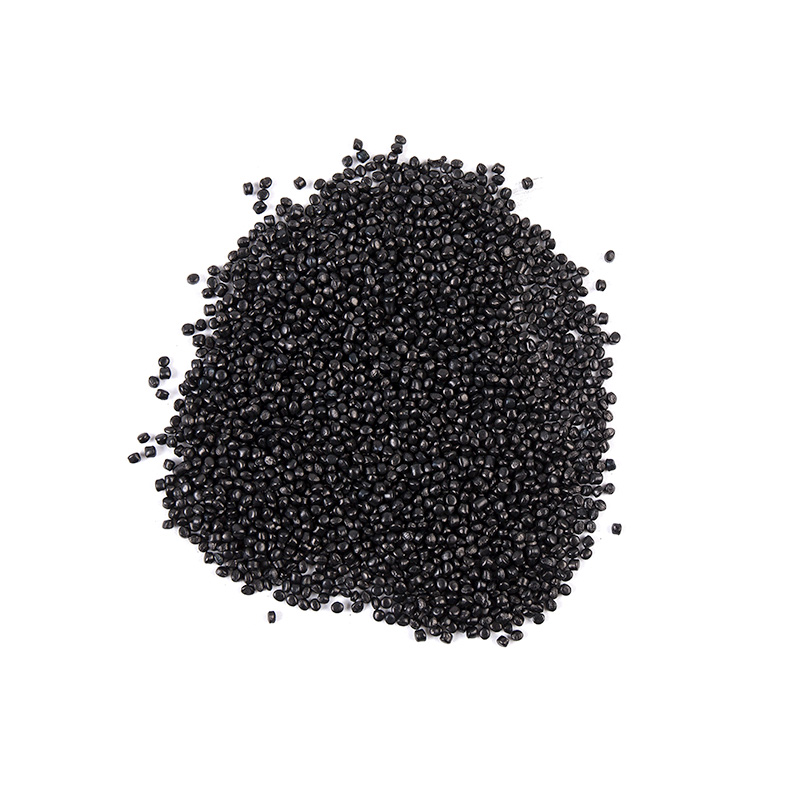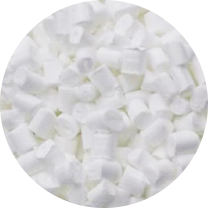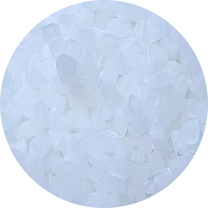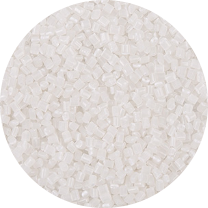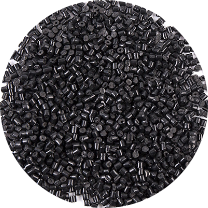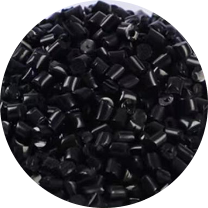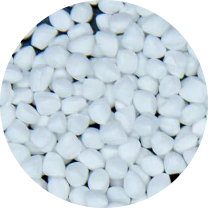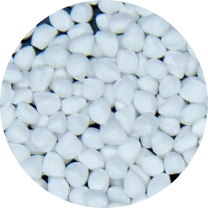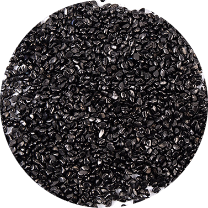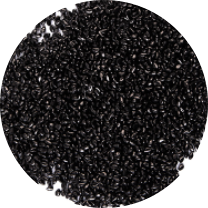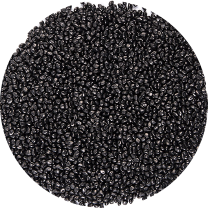Understanding Carbon Black Masterbatch: An Essential Additive for Plastics
Carbon black masterbatch is a highly concentrated mixture of carbon black pigment and a polymer carrier resin. This innovative additive plays a crucial role in the plastics industry, offering a convenient and efficient way to incorporate carbon black into various plastic products. Its market importance stems from its ability to impart a range of desirable properties, from deep black coloration to enhanced UV protection and electrical conductivity. When considering plastic films, for instance, carbon black masterbatch for plastic films is particularly vital for achieving optimal performance.
RY-3209 Carbon Black Masterbatch Dyestuff Granule For Plastic/HDPE/PE/PP Pipes
Core Applications of Carbon Black Masterbatch
The versatility of carbon black masterbatch makes it indispensable across numerous plastic applications:
-
Plastic Films: For applications requiring superior UV resistance and opacity, the best carbon black masterbatch for plastic films is often employed. It effectively shields the polymer from harmful UV radiation, extending the lifespan of the film, and also provides excellent light-blocking capabilities.
-
Pipe Extrusion: In the production of pipes, especially those made from HDPE and PPR, carbon black masterbatch for pipe extrusion is a key additive. It provides long-term UV stability and contributes to the structural integrity of the pipes, which are often exposed to outdoor elements.
-
Antistatic Materials: For applications where static electricity buildup is a concern, such as in electronic packaging or certain industrial components, conductive carbon black masterbatch for ESD applications is essential. The carbon black particles create conductive pathways within the polymer matrix, effectively dissipating static charges.
-
Food Packaging: Safety and compliance are paramount in food contact materials. Food-grade carbon black masterbatch for packaging is specifically formulated to meet stringent regulatory requirements, ensuring that the final product is safe for its intended use while still benefiting from the properties imparted by carbon black.
Key Performance Analysis of Carbon Black Masterbatch
Understanding the fundamental properties of carbon black masterbatch is crucial for its effective application:
-
How does carbon black masterbatch improve UV resistance?
Carbon black's remarkable ability to absorb and scatter ultraviolet (UV) radiation is central to its function as a UV stabilizer. When incorporated into plastics, carbon black particles act as a barrier, absorbing harmful UV light and converting it into harmless heat. This process prevents the UV radiation from reaching and degrading the polymer chains, thus extending the material's lifespan, particularly for outdoor applications. The effectiveness of UV protection is influenced by factors such as carbon black's particle size, structure, and concentration. Generally, smaller particle sizes and higher concentrations provide superior UV shielding.
-
Carbon black masterbatch vs. titanium dioxide for opacity:
Both carbon black and titanium dioxide (TiO2) are widely used pigments for achieving opacity in plastics, but they function differently and offer distinct advantages. Carbon black provides opacity primarily through absorption of light, resulting in a deep, intense black color. It is highly efficient, often requiring lower loading levels to achieve full opaqueness. Titanium dioxide, on the other hand, achieves opacity through the scattering of visible light, producing a bright white color. While TiO2 is excellent for whiteness and brightness, it generally requires a higher concentration to achieve the same level of opacity as carbon black, especially in thin film applications. The choice between them depends on the desired color and specific performance requirements.
-
How to test dispersion quality of carbon black masterbatch?
The dispersion quality of carbon black within the masterbatch is paramount, as poor dispersion can lead to streaks, inconsistent color, reduced mechanical properties, and diminished UV protection. Several methods are employed to assess dispersion quality:
- Microscopic Analysis: This involves examining thin sections of the masterbatch or the final product under an optical or electron microscope to visually identify agglomerates or uneven distribution of carbon black particles.
- Film Blowing/Extrusion Test: A common method, particularly for film applications, involves blowing or extruding a film with the masterbatch. The resulting film is then inspected for the presence, size, and number of undispersed carbon black specks or "fish eyes." More advanced techniques can quantify these defects.
- Melt Flow Dispersion Test: This involves processing the masterbatch under controlled melt conditions to observe how well the carbon black disperses under shear.
- Optical Density Measurement: For films, variations in optical density across a sample can indicate poor dispersion. A black-and-white densitometer can be used, and the standard deviation of optical density measurements can quantify dispersion uniformity.
- Visual Rating Against Standards: Many industries use standardized photographic charts to visually compare the dispersion quality of a sample against established benchmarks.
How to Choose Carbon Black Masterbatch?
Selecting the right carbon black masterbatch is critical for optimal product performance and cost-efficiency:
-
Carbon black masterbatch dosage for HDPE pipes:
The appropriate dosage of carbon black masterbatch in HDPE pipes is crucial for achieving the desired balance of UV resistance, mechanical properties, and cost. Typically, for outdoor applications like HDPE pipes, a carbon black content of around 2% to 2.5% by weight in the final product is often recommended to provide sufficient UV protection and long-term durability. However, the exact dosage can vary depending on the specific carbon black grade, pipe wall thickness, intended service life, and local environmental conditions. Consulting with suppliers and conducting material testing are essential to determine the precise optimal loading.
-
Cost-effective carbon black masterbatch for injection molding:
For injection molding applications, cost-effectiveness is a significant consideration. This involves not only the unit price of the masterbatch but also its performance, ease of processing, and impact on the final product's quality. A cost-effective solution often entails selecting a masterbatch with excellent dispersion properties, allowing for lower addition rates while still achieving the desired color and performance. Furthermore, choosing a masterbatch with a carrier resin compatible with the base polymer minimizes processing issues and potential scrap, contributing to overall cost savings.
-
Carbon black masterbatch suppliers in China:
China has emerged as a major global hub for masterbatch manufacturing, offering a wide range of carbon black masterbatch products. When selecting carbon black masterbatch suppliers in China, it's crucial to consider several factors:
- Quality Control and Certifications: Look for suppliers with robust quality management systems (e.g., ISO certifications) and product certifications relevant to your application (e.g., REACH, RoHS, FDA compliance for food-grade applications).
- Technical Support and R&D Capabilities: A good supplier should offer technical assistance, product customization, and have strong R&D capabilities to innovate and meet evolving industry needs.
- Consistency and Reliability: Assess the supplier's track record for consistent product quality and on-time delivery.
- Price and Lead Time: While competitive pricing is important, it should be balanced with quality and reliability. Evaluate lead times and minimum order quantities.
- Logistics and Export Experience: For international buyers, experience with export procedures and efficient logistics are vital.
Future Trends and Sustainability in Carbon Black Masterbatch
The carbon black masterbatch market is continually evolving, driven by technological advancements and, increasingly, by a strong focus on sustainability.
Key Future Trends:
- Enhanced Performance and Specialization: Expect continued development of highly specialized carbon black masterbatches tailored for specific applications. This includes masterbatches offering superior UV resistance for demanding outdoor uses, ultra-conductive grades for advanced electronics, and formulations designed for optimal mechanical reinforcement in high-performance polymers. Nano-black masterbatches, utilizing ultra-fine carbon black particles, are gaining traction for improved dispersion and enhanced properties.
- Sustainability and Circular Economy: This is perhaps the most significant trend. The plastics industry, including masterbatch manufacturers, is under increasing pressure to reduce its environmental footprint. This translates to:
- Recovered Carbon Black (rCB): A major focus is on utilizing carbon black recovered from end-of-life tires through pyrolysis. rCB offers a more sustainable alternative to virgin carbon black, reducing reliance on fossil fuels and diverting waste from landfills. Manufacturers are investing in technologies to ensure the quality and consistency of rCB for masterbatch production.
- Bio-based and Recycled Carrier Resins: The development of masterbatches using bio-based polymers (derived from renewable resources) or recycled plastic as the carrier resin is growing. This helps to further reduce the overall carbon footprint of the final plastic product.
- Improved Recyclability of Plastics: Masterbatches are being formulated to facilitate the recycling of colored plastics. By ensuring that the masterbatch does not hinder the sorting and reprocessing of plastics, it contributes to a more circular economy.
- Reduced Carbon Footprint in Production: Manufacturers are also focusing on optimizing their own production processes to be more energy-efficient and reduce greenhouse gas emissions.
- Smart Packaging and Electronics: As consumer electronics and smart packaging solutions become more prevalent, the demand for carbon black masterbatches with advanced conductive properties and electromagnetic shielding capabilities will continue to rise.
- Automotive Industry Demand: The automotive sector's ongoing shift towards lightweight plastic components to improve fuel efficiency and reduce emissions will continue to drive demand for high-performance carbon black masterbatches that offer both aesthetic appeal and critical functional properties like UV protection and durability.
- Digitalization and Automation: Advanced manufacturing techniques and quality control systems are being integrated into masterbatch production, leading to greater consistency, efficiency, and traceability.
Challenges and Opportunities:
While the future looks promising for carbon black masterbatch, challenges remain. The cost of specialty and sustainable grades can be higher, and ensuring consistent quality of recovered materials requires significant technological investment. However, these challenges also present opportunities for innovation, leading to more efficient processes, novel formulations, and ultimately, a more sustainable and high-performing range of carbon black masterbatch products for the global plastics industry.
Carbon black masterbatch stands as a cornerstone in the plastics industry, offering a multi-functional solution that extends far beyond simple coloration. From providing critical UV protection in outdoor applications like agricultural films and pipes, to imparting essential conductive properties for electrostatic discharge (ESD) sensitive environments, and ensuring safety in food-grade packaging, its versatility is unmatched. The careful selection of masterbatch, considering factors like desired performance, dosage, and dispersion quality, is paramount to achieving optimal results and cost-effectiveness.
The industry is currently experiencing a dynamic shift, with a strong emphasis on sustainability. The development and adoption of recovered carbon black (rCB) and masterbatches utilizing recycled or bio-based carrier resins are testament to this commitment, paving the way for a more circular economy in plastics. As technological advancements continue and the demand for high-performance, environmentally responsible plastic products grows across sectors like automotive, construction, and electronics, carbon black masterbatch will undoubtedly remain an indispensable and evolving additive, driving innovation and shaping the future of materials.
prevNo previous article
nextUV Resistant Carbon Black Masterbatch: Applications, Benefits, and Industry Trends


 English
English 中文简体
中文简体 한국어
한국어 عربى
عربى